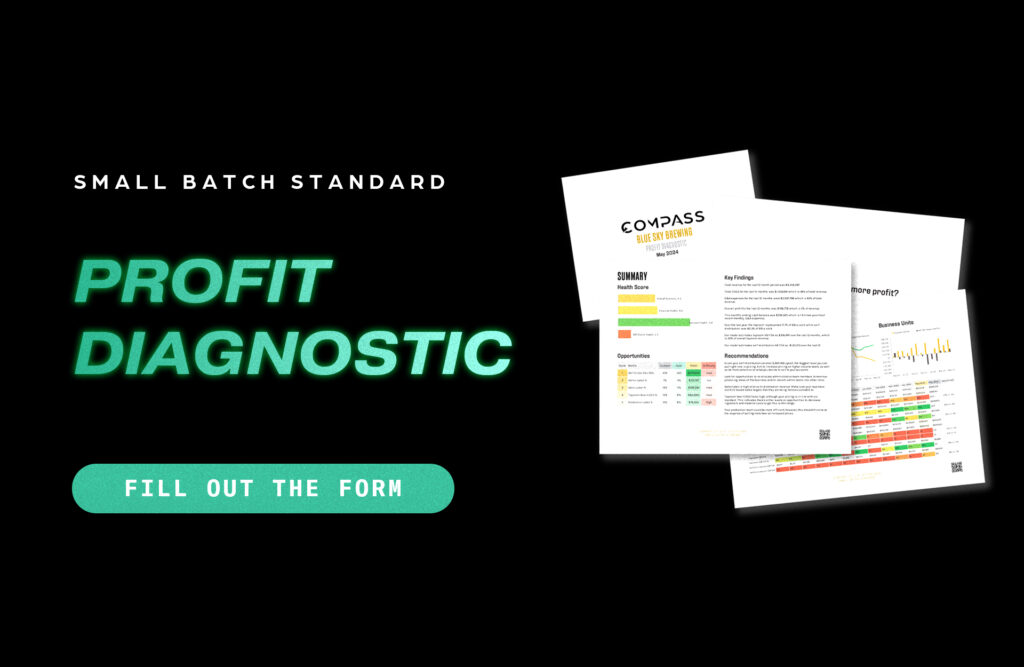Today, I want to start by talking about my family.
We just got back from a week long trip in Mexico City.
And when I tell you what we learned during the week there, the food we ate, and the culture that we immersed ourselves in…it was incredible. We had such a good time.
But today’s topic is about another family located in the neighborhood of wholesale.
And this family has what I like to call the Margin Siblings.
The Margin Family
We can all agree that wholesale today is a tough slug.
And if I’m being honest with you, the best way we combat this challenge is to take the time to understand our margins on a new level like we’ve never understood them before.
May I introduce you to the Margin family.
Waaaay back in the day Mama Margin and Daddy Margin had three Margin children:

- The oldest is Gross Margin. He talks a lot and is quite annoying, but is somewhat useful.
- The second child is Contribution Margin. She is just lovely to be around. She doesn’t talk back. She gives you a lot of useful information.
- And last came Net Margin. Net is Mama’s Boy. A spoiled brat and will probably rule the world one day.
Meet the Siblings
Now that we’ve learned who the siblings are, let’s really get to know them.
I’ll give you an introduction to each and we’ll discuss:
- What each Margin means
- How each Margin is calculated
- Our specific Margin benchmarks that we use here at SBS
Sit back and relax. Don’t take too many notes. I’ll tell you why at the end of our little meet-and-greet.

First up is Gross Margin. As I said before, oldest child, semi-useful, but talks a lot.
We’re not going to solve the world’s problems with Gross Margin.
- What is Gross Margin? It tells us a few things, but overall, it’s pretty surface-level stuff. It lets us know the amount that is left over to pay our general and administrative expenses like payroll, utilities, rent, keg leasing, advertising, etc.
- How do we calculate Gross Margin? Revenue minus Cost of Goods Sold (COGS) divided by Revenue.
- What’s our gross margin benchmark? Generally speaking: Packaged Beer is between 60% and 70% and Kegged Beer is between 40% and 50%.
That’s Gross Margin in a nutshell. Like I said: it’s only somewhat useful, but it needs to be calculated.
Next up is Contribution Margin. This might be a new concept for some of you, but hang with me and don’t get too caught up in it.
- What is Contribution Margin? Once the product is sold, Contribution Margin tells us how much is left over to contribute to our fixed expenses.
- When we sell beer or spirits, all of our variable costs, our raw materials, our packaging, our labor, and our supplies are all built into the pricing of our product. Contribution Margin says that once we figure out all those expenses, can we actually contribute more to our fixed expenses? I sure hope we can, it’d be a weird thing if we can’t.
- How do we calculate Contribution Margin? This Margin Sibling is not a cut-and-dry calculation, so I don’t have a calculation for you. There are too many variables.
- What’s our contribution margin benchmark? This one is reaaally easy: It needs to be a positive number. That’s it.
And that is Contribution Margin. Once the product is sold, we need to have some $$$ leftover to contribute to our overall fixed costs. We never want to have a negative Contribution Margin.
Last up is Net Margin. This is the spoiled one. This is the one that’s going to rule the world.
- What is Net Margin? After everything is considered and all your expenses are calculated and every line item on the P&L is taken into consideration…How much $$$ is left? Is there anything for you to take home?
- How do we calculate Net Margin? It’s not a one-size-fits-all. We go line-by-line. For example, we aren’t going to consider taproom labor in our Net Margin for wholesale. We’ve got to look at the face of the P&L to figure out what allocation we are going to use.
- What’s our benchmark? Please be seated for this. The benchmark for Net Margin is between 1% and 5% for Wholesale and 12% to 18% for Taproom.
This is an abysmal and a critically small Net Margin that doesn’t leave a lot of room for error.
One delayed shipment, one botched tank, one delayed knockout, and that margin starts to slip to zero and into the negatives.
Keeping Up with the Margins
Our wholesale game and margin calculations need to be on point.
If you happen to be distributing even just an ounce of beer, you need to incorporate the Margin Siblings. They should be calculated and maintained on a regular basis.
The margins reveal crucial information—helping you determine which beers are worth distributing and which ones to avoid.
I just threw a ton of information at you. But I have one more thing to add before I wrap up:
We want to calculate your wholesale margins for you.
Down below you’ll find an offer for an entirely free Profit Diagnostic.
Click or tap on the offer, fill out the four fields (First & Last Name, Brewery, and Email), and someone from the consulting team will be in touch with you shortly.
If you distribute, this is an absolute no brainer.
I hope to talk to you soon.
-cf
P.S. – You can find Part 2: Contract Margin and Part 3: Margin Decisions on their respective pages.
